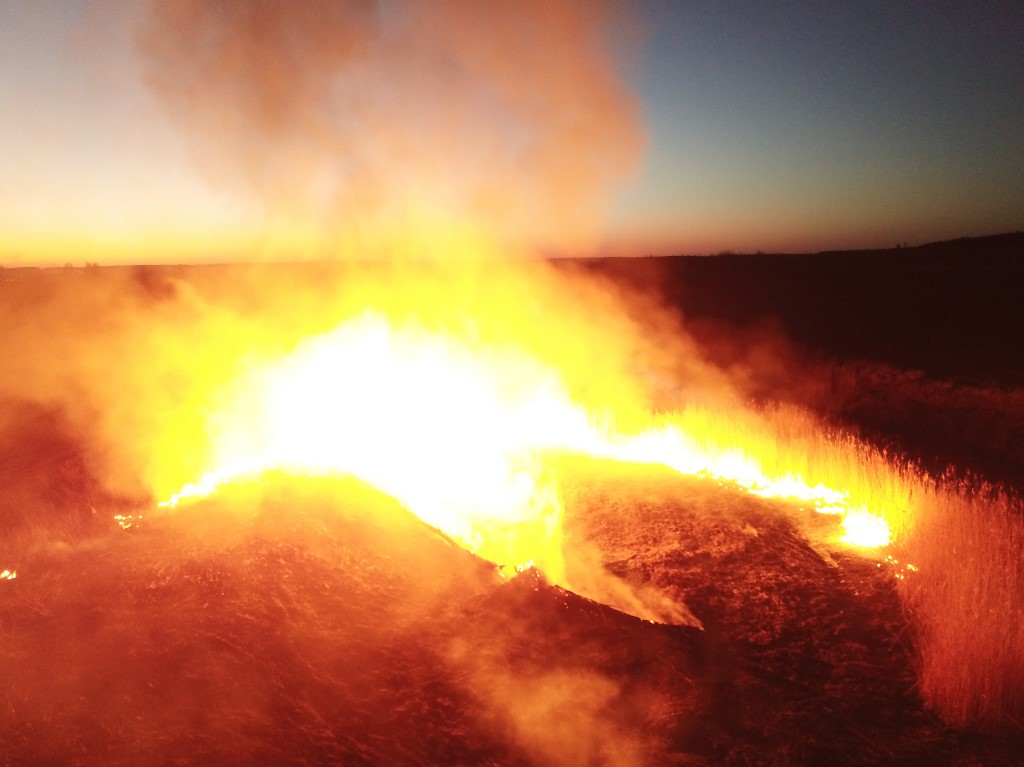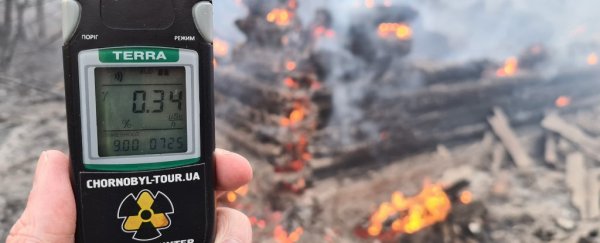Editor's note (14 Apr 2020): The initial readings showing radiation levels 16 times higher than normal in the area were corrected by new measurements on April 6, indicating normal radiation background levels. The article below has been updated to reflect this.
More than 30 years on, the site of the 1986 Chernobyl nuclear disaster is safe enough for humans to visit again, albeit briefly – but a recent forest fire has raged through large parts of the region.
There is concern that these fires could release radiation previously locked away in the soil, leaves and wood of the forests around the 30-kilometre (19-mile) Chernobyl exclusion zone.
According to a report from AP, a fire was started near the village of Volodymyrivka on Saturday 4 April, eventually spreading to cover more than 100 hectares (nearly 250 acres). Even worse, it looks like the fire was started deliberately.
Two separate blazes were still going on Monday, after more than 100 emergency firefighters had been called to the scene. Planes and a helicopter were also called in to provide water drops.
 Photo taken on 5 April 2020 showing the fires still burning. (Yaroslav Emelianenko/AFP)
Photo taken on 5 April 2020 showing the fires still burning. (Yaroslav Emelianenko/AFP)
Originally, it was reported that readings taken near the centre of the fire showed a microsievert per hour (μSv/h) reading of 2.3, way up from the 0.14 level that would normally be expected here. However, these readings were since updated and the radiation levels on the scene were shown to be normal.
Ukrainian authorities were keen to stress that surrounding neighbourhoods further away from the fire were safe.
It is safe to go outside and open windows in the city of Kiev, some 100 kilometres (62 miles) away from the original power plant site, according to Yegor Firsov, head of the ecological inspection service in Ukraine.
Experts have been warning about the dangers of forest fires around Chernobyl for several years now, and officials are calling for stronger restrictions for accessing the area and harsher fines for those who attempt arson.
With or without direct human help though, fires like this are common in the region that surrounds the former disaster site.
Rising temperatures caused by climate change mean the vegetation is drying out, while decay rates appear to be lower, too – perhaps due to the radiation killing off insects and microorganisms that would usually assist in the breakdown of old organic matter.
The plant life that's growing throughout the Chernobyl exclusion zone isn't affected by radiation in the same way that animal life is, thanks to its different and more adaptable biological structure. Plants can replace dead cells and tissue much more easily than animals can.
